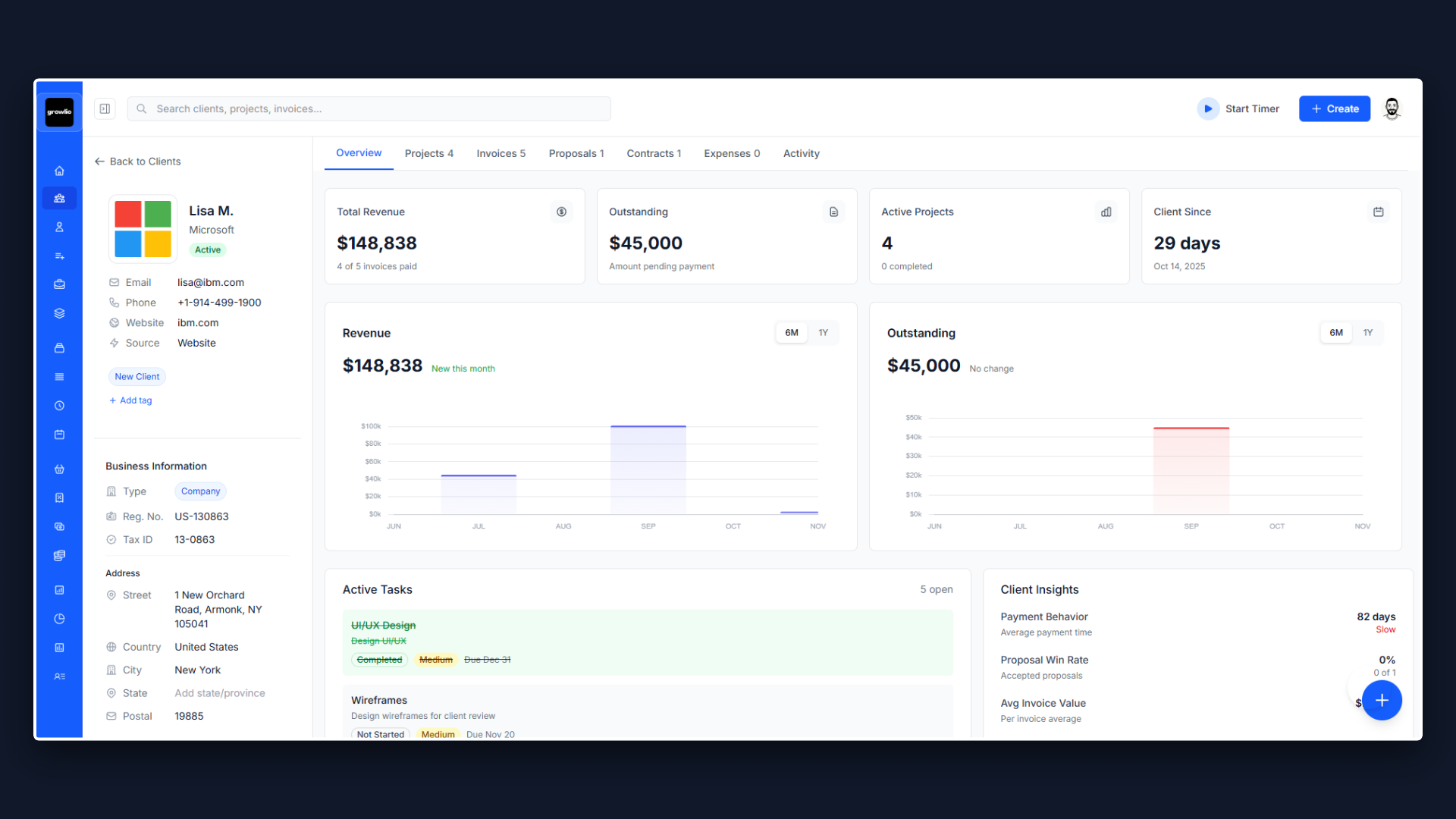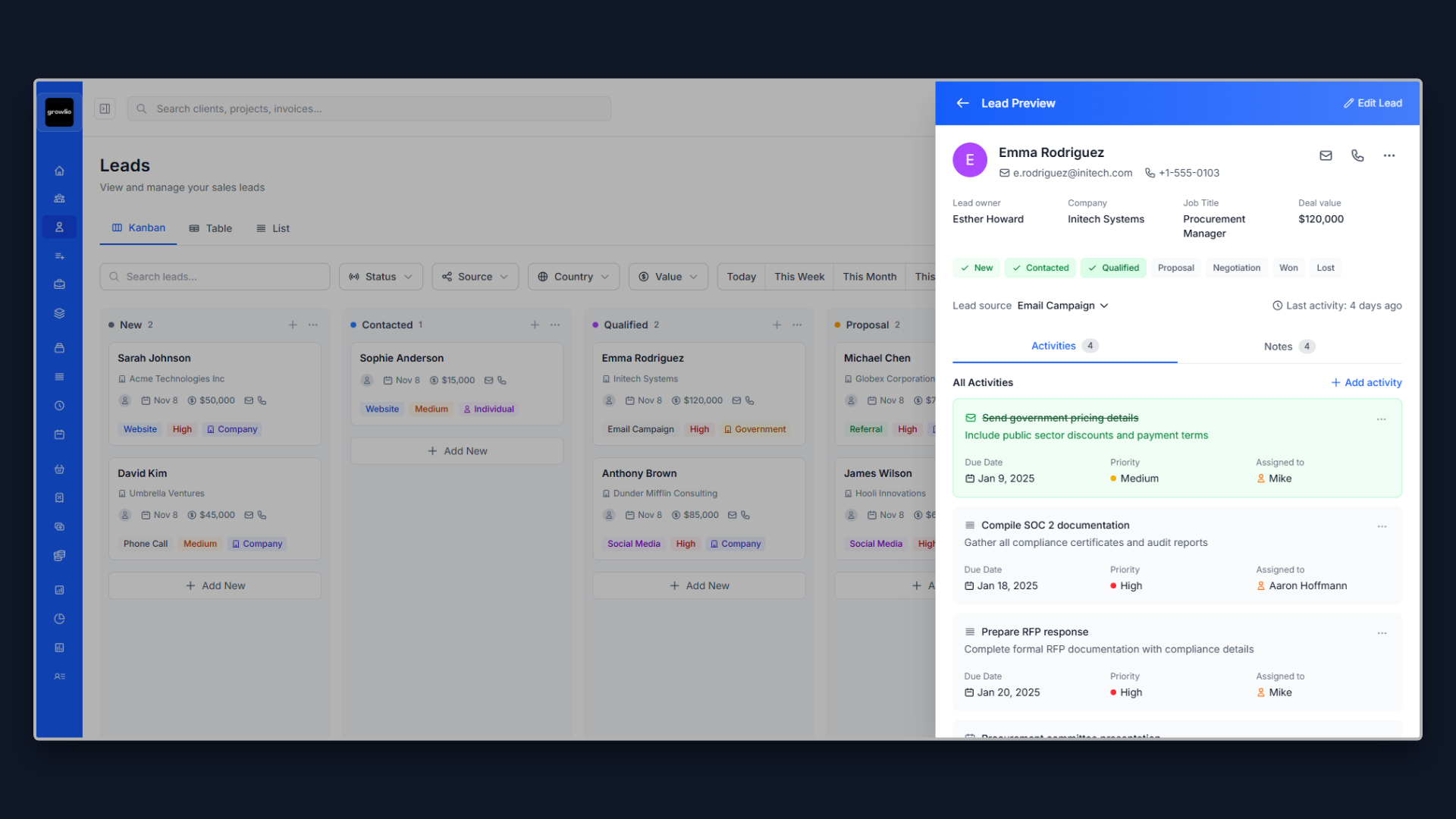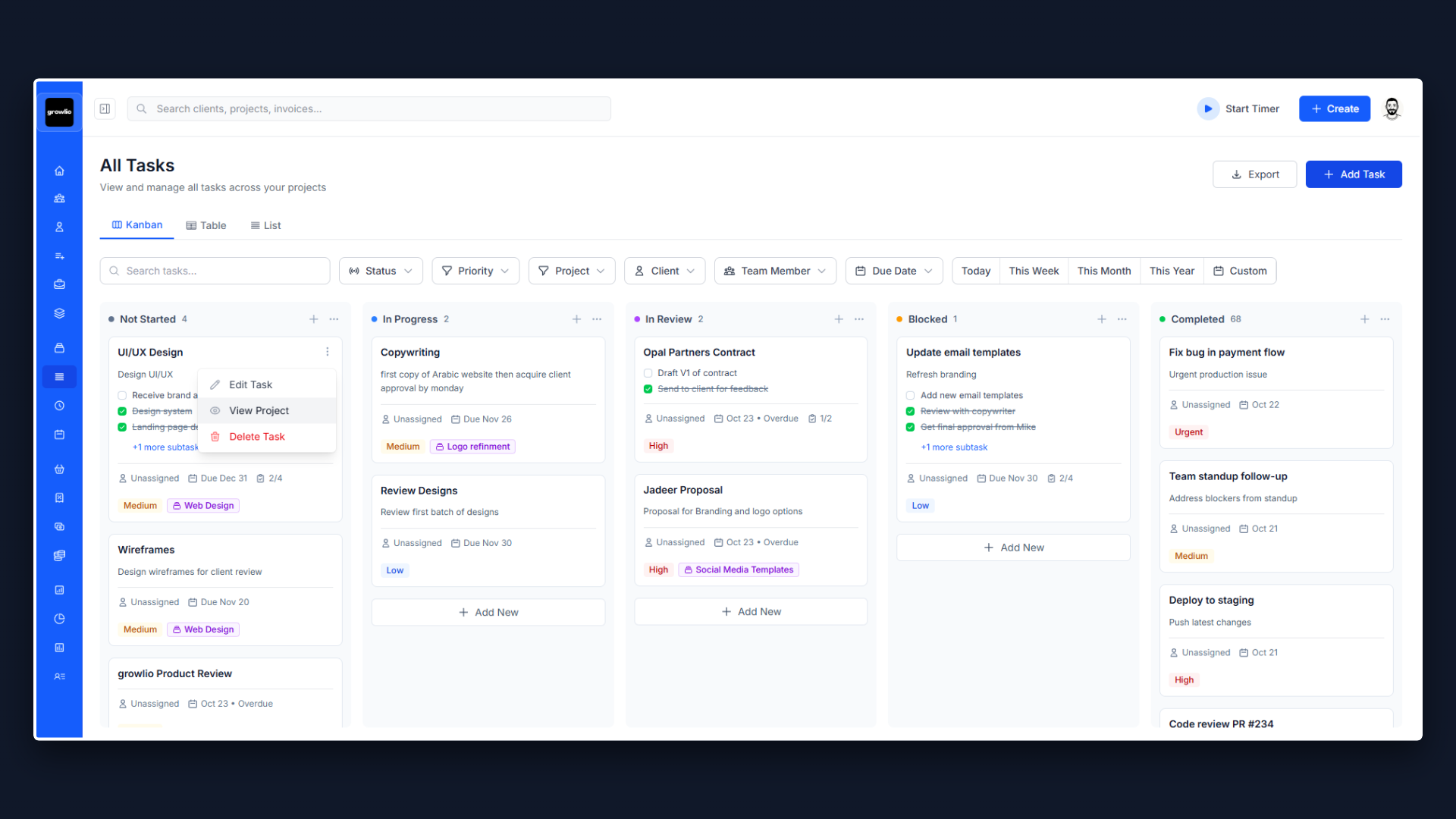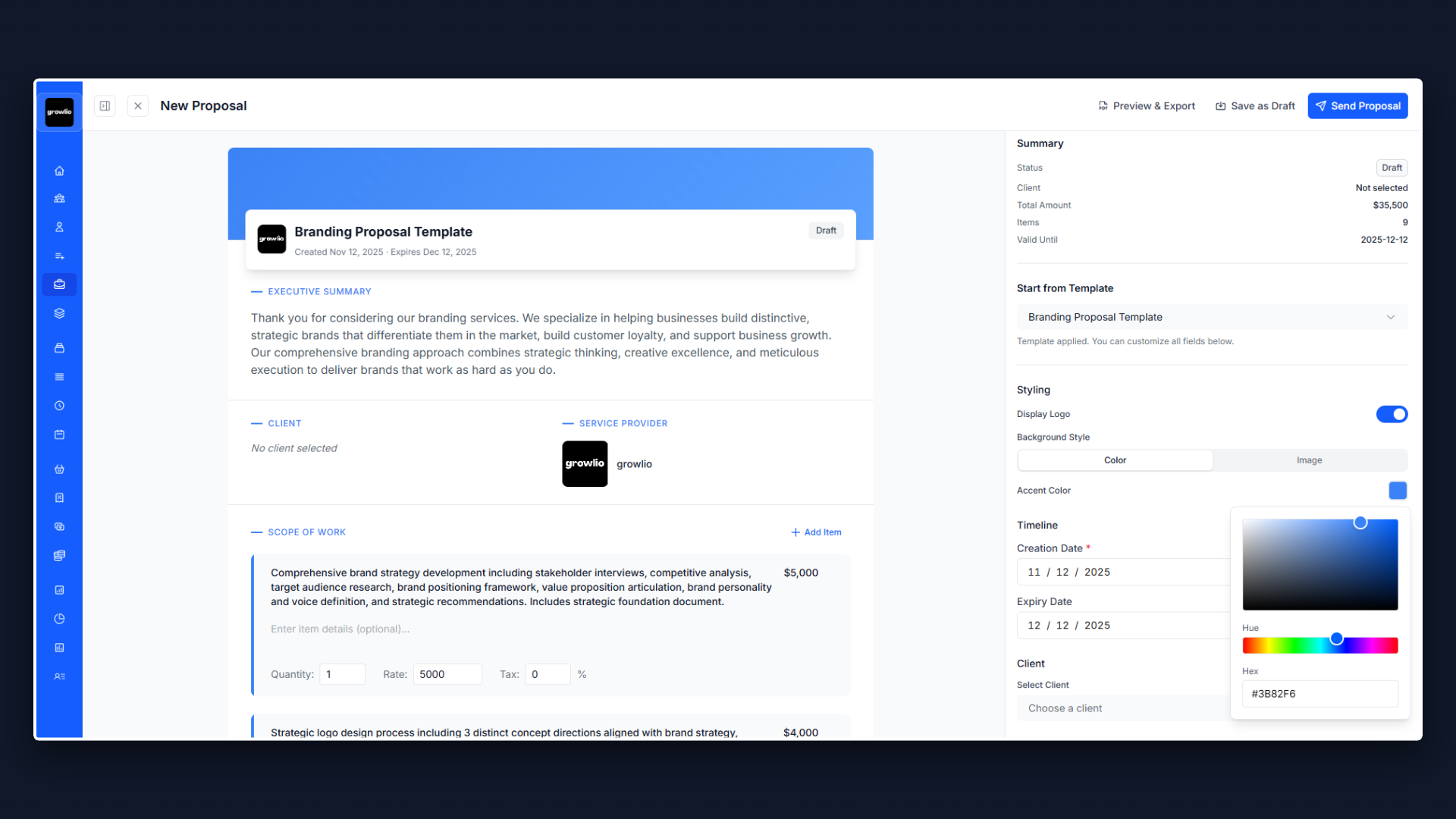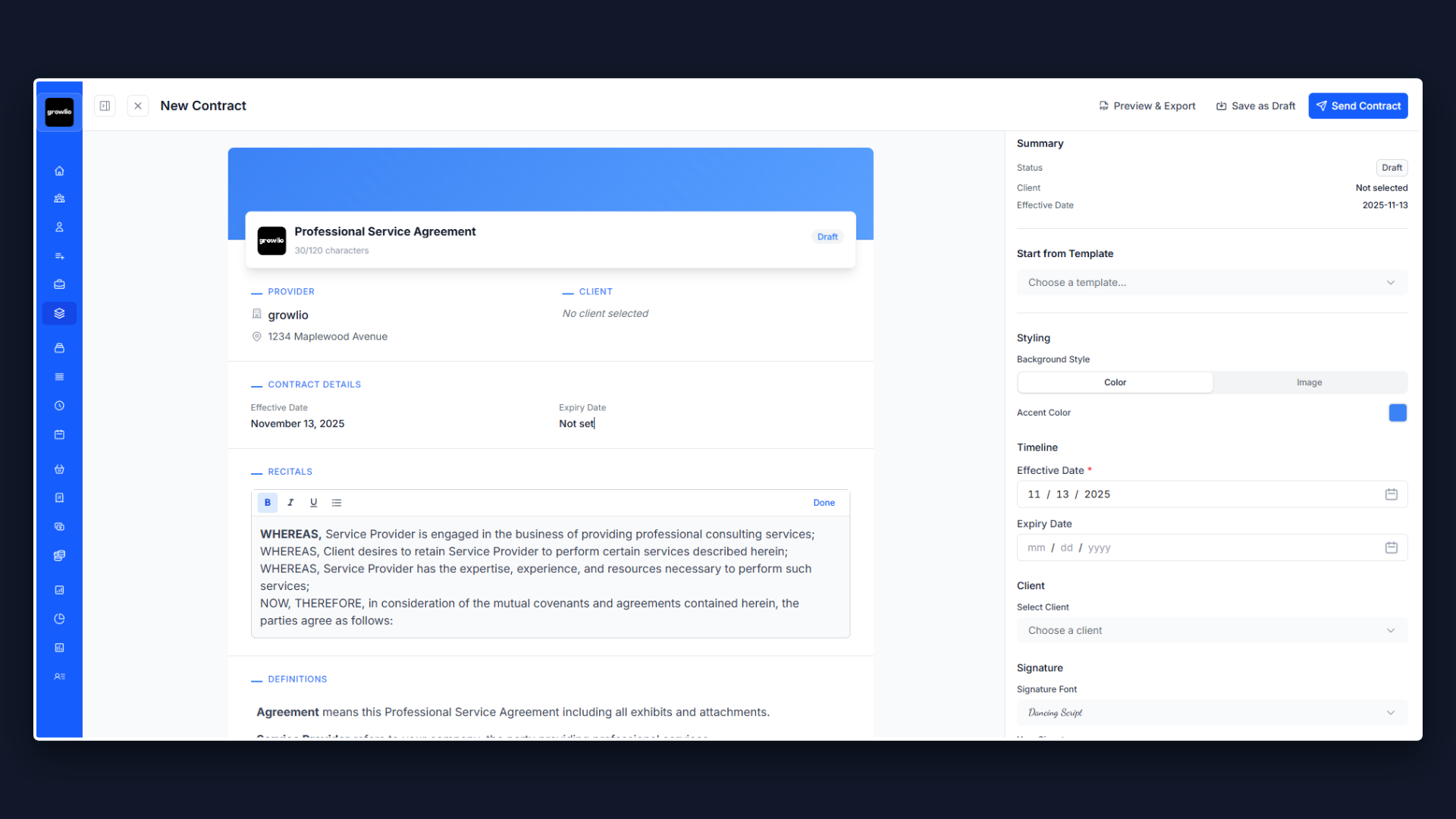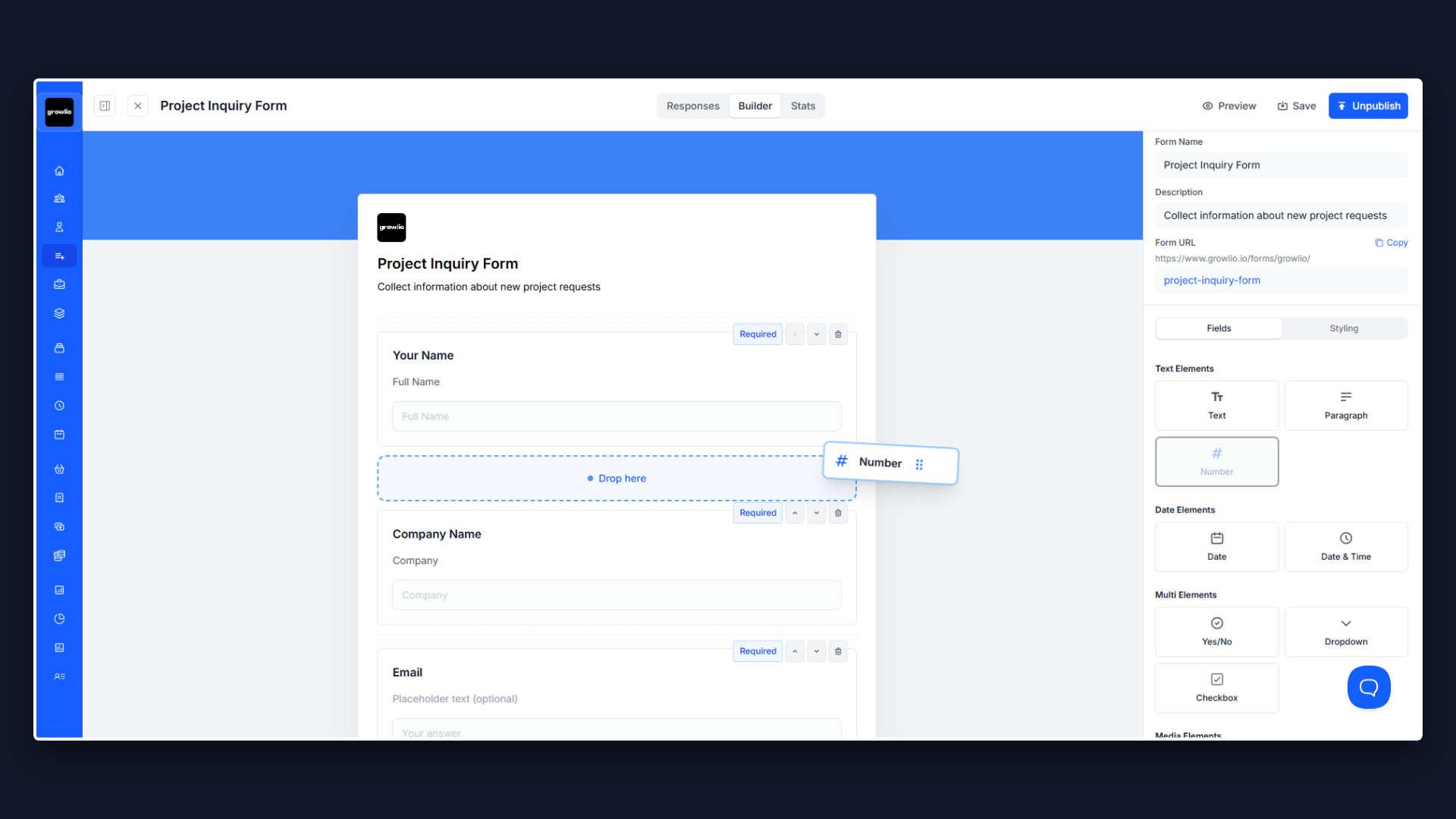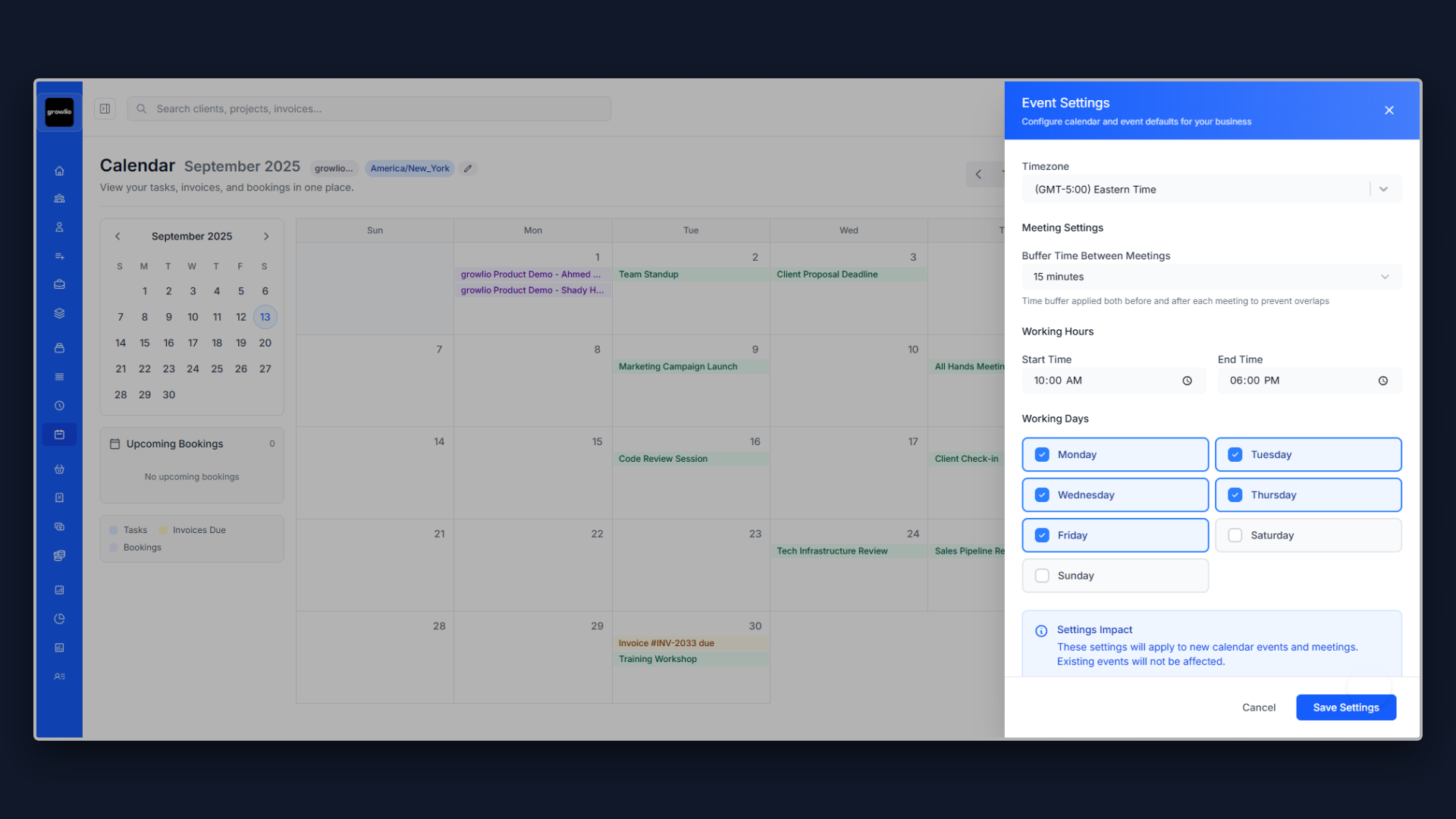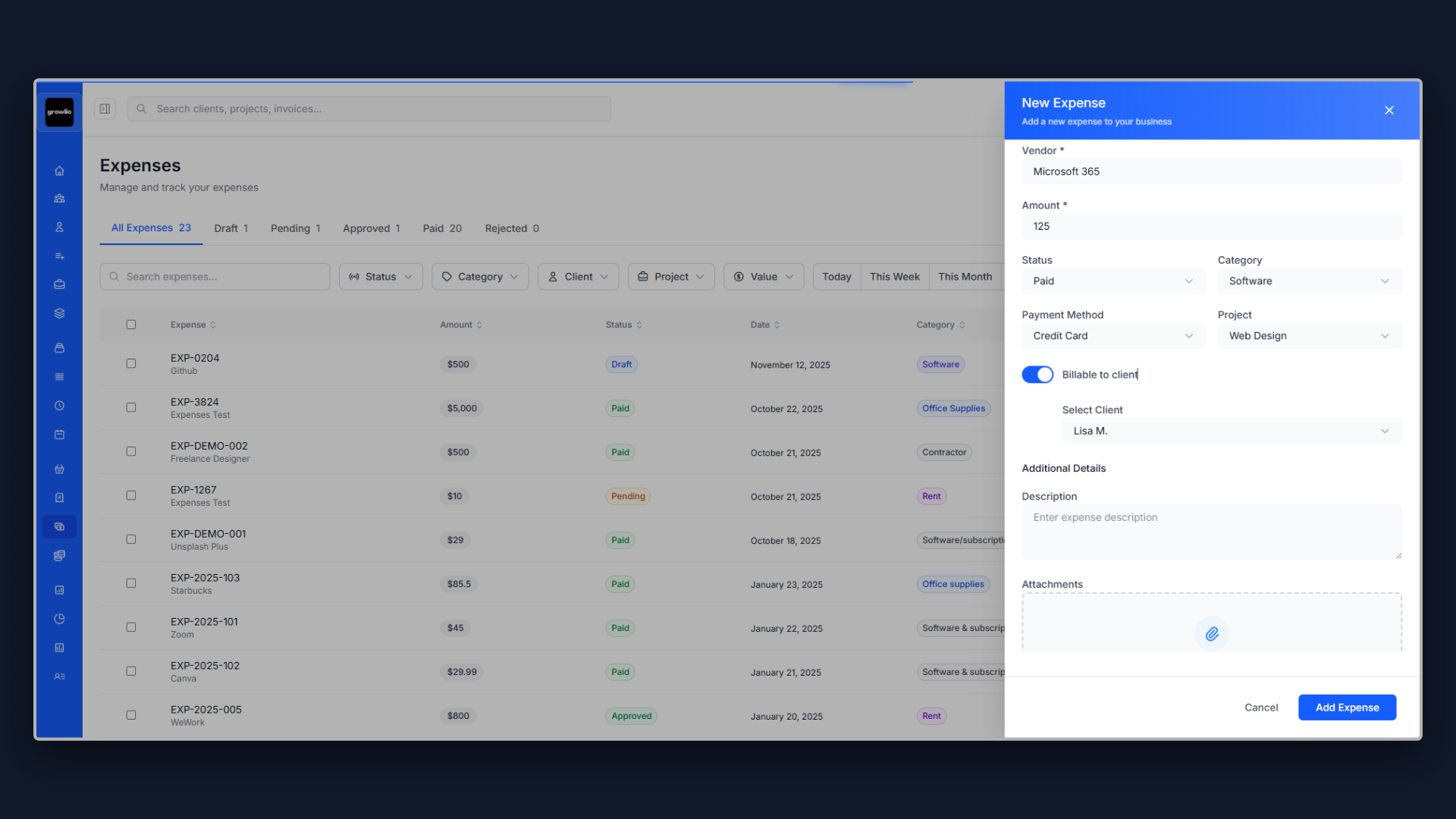Why Your Market Research Proposal Makes or Breaks Your Business
As a market research professional or insights agency, you know that companies using market research are 2.3x more likely to exceed revenue goals and that 74% of businesses say customer insights are critical to their strategy. But here is the harsh reality: even if you are exceptional at conducting rigorous research and uncovering actionable insights, you will struggle to win clients if your proposals do not demonstrate your value clearly.
The market research industry generates over $76 billion annually, with businesses increasingly recognizing that assumptions and gut feelings lose to data-driven decisions. Yet many talented market researchers lose contracts to competitors who simply write better proposals. This has nothing to do with your research skills and everything to do with how you present them.
Your market research proposal is your first impression, your sales pitch, and your contract all rolled into one document. It needs to educate prospects who may see research as expensive and slow while simultaneously proving you are the expert they need. This is a delicate balance that many get wrong.
1. Start With the Client's Current Knowledge Gaps, Not Your Services
The biggest mistake market researchers make is leading with a list of services: "We offer surveys, focus groups, competitive analysis..." Your prospect does not care about your services yet. They care about their problems.
Start your proposal by demonstrating you understand their specific information needs and decision context. Are they launching a new product without customer validation? Are they losing market share without understanding why? Are they making strategic decisions based on assumptions rather than data? Do they lack insight into customer needs and pain points? Are competitors outmaneuvering them and they do not know how? Address these pain points explicitly.
For example: "Our preliminary analysis shows you are planning a $2 million product launch targeting enterprise customers, but you lack validated data on whether this segment actually needs this solution, what price point they would accept, which features matter most, how they currently solve this problem, and who your real competitors are in their minds. Making these decisions based on internal assumptions rather than customer research puts the entire investment at risk. A strategic market research study could validate or invalidate your key assumptions, potentially saving you from a costly launch failure or identifying adjustments that could increase success probability from 35% to 75%."
This approach immediately shows you have done your homework and understand what is at stake. Now they are ready to hear your solution.
2. Include a Research Needs Assessment to Demonstrate Your Expertise
Nothing builds credibility faster than showing you understand their business context and information gaps. Include a brief needs assessment highlighting 3-5 critical questions they need answered:
Strategic Decision Context: Major decision being made (product launch, market entry, pricing change, positioning shift), current assumptions driving the decision, cost and risk if assumptions are wrong, timeline and urgency for decision, stakeholders who need to buy into the research findings.
Critical Unanswered Questions: Customer needs and pain points (do they actually have the problem you think they have?), market size and opportunity (is the addressable market large enough?), competitive landscape (who are the real competitors and what are their strengths?), pricing and willingness to pay (what price maximizes revenue?), positioning and messaging (what resonates with target customers?).
Data and Insight Gaps: Decisions currently made on gut feel or limited data, lack of direct customer feedback and validation, outdated research from 2+ years ago, changing market conditions not reflected in available data, internal disagreements that data could resolve.
Research Readiness: Timeline constraints affecting research scope, budget available for research investment, internal resources to support research execution, willingness to act on findings even if contrary to assumptions, existing research or data that can be leveraged.
This mini assessment serves multiple purposes: it proves you understand their business, it frames research as strategic investment rather than expense, and it makes your proposed methodology feel essential.
3. Break Down Your Research Methodology Into Clear Phases
Market research methodologies can be complex, but your proposal should not confuse clients. Break your approach into clear, logical phases.
Phase 1: Research Design & Planning (Week 1-2)
Stakeholder interviews to understand business context, research objectives and key questions definition, methodology selection (qual vs. quant, primary vs. secondary), sample design and participant criteria, research instrument development (surveys, discussion guides), timeline and milestone planning, IRB or ethical review if required.
Phase 2: Data Collection (Week 2-6)
Secondary research and desk research, survey fielding and response collection, focus groups or in-depth interviews, competitive intelligence gathering, observational research or ethnography if applicable, quality control and data validation, follow-up and clarification as needed.
Phase 3: Analysis & Synthesis (Week 6-8)
Quantitative data analysis and statistical testing, qualitative data coding and theme identification, cross-tabulation and segmentation analysis, competitive positioning mapping, synthesis of findings into insights, implication development and recommendations, validation and sanity checking.
Phase 4: Reporting & Presentation (Week 8-9)
Executive summary and key findings document, detailed research report with methodology and data, visual presentation deck for stakeholders, workshop or presentation of findings, Q&A and discussion facilitation, action planning and next steps, research archive and raw data delivery.
This phased approach makes market research feel manageable and shows you have a rigorous, professional methodology.
4. Set Realistic Expectations About Timeline and Deliverables
One of the fastest ways to lose trust is overpromising results. Clients appreciate honesty about research timelines and what insights can realistically reveal.
Be explicit: "Quality market research takes time to design properly, recruit participants, collect meaningful data, and analyze rigorously. A typical study takes 8-12 weeks from kickoff to final presentation, depending on methodology and sample size. Rushing research compromises quality and leads to unreliable findings that could mislead critical decisions. We plan realistic timelines that deliver credible, actionable insights."
Provide a realistic projection: "For your research objectives, we project: Week 1-2: Research design, instrument development, and participant recruitment planning. Week 3-6: Data collection (surveys, interviews, focus groups). Week 7-8: Data analysis, insight development, and implication synthesis. Week 9: Report preparation and stakeholder presentation. Total timeline: 9-10 weeks from kickoff to final deliverable."
Address research limitations: "Market research provides insights and reduces uncertainty, but cannot eliminate all risk. Research reveals what customers say and do within study parameters, but behavior can differ in real-world contexts. Sample sizes affect statistical confidence—larger samples provide more certainty but cost more. We are transparent about confidence levels, margins of error, and limitations so you can make informed decisions with appropriate caveats."
This honesty builds trust and prevents unrealistic expectations about research capabilities.
5. Explain Your Methodology Selection and Research Design
Many clients do not understand different research methodologies. Use your proposal to educate them on your approach and rationale.
Explain methodology types: "Market research methodologies serve different purposes: Qualitative research (focus groups, interviews) explores the why behind behaviors, generates hypotheses, uncovers unexpected insights, ideal for exploratory questions and understanding context. Quantitative research (surveys, experiments) measures how many, how much, and establishes statistical confidence, tests hypotheses, segments markets, ideal for validation and sizing. Most impactful research combines both—qualitative exploration followed by quantitative validation."
Outline your recommended approach: "For your objectives, we recommend: Primary research (new data collection directly from your target market), starting with qualitative phase (8-10 in-depth interviews with target customers), followed by quantitative phase (300-500 survey responses for statistical significance), supplemented with secondary research (industry reports, competitor analysis, market sizing). This mixed-method approach balances depth of insight with statistical confidence."
Give methodology rationale: "We recommend starting qualitative because you need to understand customer language, pain points, and decision criteria before designing a quantitative survey. Asking the wrong questions at scale wastes budget and produces misleading data. Qualitative exploration ensures your survey asks the right questions in language customers actually use. This two-phase approach costs slightly more but delivers far more actionable insights."
This demonstrates strategic thinking about research design, not just execution capability.
6. Address Sample Design and Participant Recruitment
Sample quality determines research quality. Explain your approach to recruiting the right participants.
Explain sample importance: "Research is only as good as the sample. Surveying the wrong people produces misleading insights that could lead to costly mistakes. We carefully design samples to match your target market precisely—same demographics, firmographics, behaviors, and needs. If your target is CFOs at mid-market manufacturing companies, that is exactly who we recruit, not just any business professionals."
Outline recruitment approach: "We recruit participants through: specialized panel providers (B2B and consumer panels with verified profiles), customer list sampling (recruiting from your existing customers or prospects with permission), professional recruiting firms (for hard-to-reach audiences like executives or physicians), social media and community recruiting (for niche audiences), incentive optimization (offering appropriate compensation to ensure participation). Recruitment typically takes 1-3 weeks depending on audience difficulty."
Address sample size decisions: "Sample size balances statistical confidence with budget: 30-50 participants for qualitative research (interviews, focus groups), 300-400 for basic quantitative research (plus or minus 5% margin of error), 1,000+ for subgroup analysis and segmentation, 2,000+ for market sizing and forecasting. We recommend appropriate sample sizes for your objectives and budget, explaining the tradeoffs between cost and confidence."
7. Explain Your Competitive Intelligence Approach
Competitive analysis is a critical component of market research. Show prospects your approach to competitor insights.
Explain competitive research value: "Understanding competitors is essential for strategic positioning. We analyze not just who your competitors are, but their strategies, strengths, weaknesses, positioning, pricing, customer perceptions, and market share. This intelligence informs your differentiation strategy, identifies white space opportunities, and reveals threats to address."
Outline competitive analysis methods: "We gather competitive intelligence through: secondary research (websites, annual reports, press releases, job postings), customer research (asking customers about alternatives they considered), mystery shopping (experiencing competitor offerings firsthand), social listening (monitoring competitor mentions and sentiment), win-loss analysis (understanding why you win or lose against competitors), expert interviews (speaking with industry analysts or former competitor employees within ethical bounds). We use only legal, ethical methods—never corporate espionage or misrepresentation."
Address competitive positioning: "We map competitive positioning showing where competitors sit on key dimensions (price vs. quality, features vs. simplicity, etc.) and identify gaps where you could differentiate. We assess share of voice (who dominates the conversation), share of wallet (who gets budget), and share of mind (who customers think of first). This positioning analysis directly informs your go-to-market strategy."
8. Explain Your Data Analysis and Insight Development Process
Analysis is where data becomes actionable insights. Demonstrate your analytical rigor and insight generation capabilities.
Explain analysis approach: "We analyze data to uncover patterns, test hypotheses, and generate insights: Descriptive analysis (what happened—frequencies, means, distributions), comparative analysis (differences between segments, time periods, competitors), relationship analysis (correlations, drivers, predictive models), sentiment analysis (themes, emotions, language patterns in qualitative data), statistical significance testing (ensuring findings are real, not random chance). We use professional tools (SPSS, R, Qualtrics, NVivo) for rigorous analysis."
Outline insight development: "Data alone is not insight. Insights answer so what and now what: Pattern identification (finding meaningful trends in data), contextualization (understanding why patterns exist), implication development (what patterns mean for your business), recommendation formation (what you should do based on findings), prioritization (which insights matter most for your decisions). Every finding connects to business implications and actions."
Address data visualization: "We visualize data for clarity and impact: charts and graphs showing key findings at a glance, competitive positioning perceptual maps, customer journey maps showing pain points and opportunities, segmentation frameworks showing distinct customer groups, infographics summarizing complex data simply. Good visualization makes insights memorable and shareable with stakeholders."
9. Explain Your Reporting and Presentation Approach
Deliverables and presentation matter as much as research quality. Show prospects what they will receive.
Explain deliverable structure: "You will receive comprehensive documentation: Executive summary (2-3 pages) highlighting key findings and recommendations, detailed research report (30-60 pages) with methodology, data, analysis, and appendices, visual presentation deck (20-30 slides) for stakeholder presentations, raw data files and coding (Excel, SPSS, transcripts) for your archives, summary video or recording of presentation for broader sharing. All deliverables are professional, branded, and presentation-ready."
Outline presentation approach: "We present findings through: stakeholder presentation (60-90 minutes) walking through key insights, interactive discussion and Q&A addressing questions and implications, workshop facilitation helping translate insights to action plans, follow-up support (30 days) for additional questions or analysis. We tailor presentation to your audience—executive-level strategic overview or detailed tactical deep-dive."
Address actionability: "Research only creates value if it drives action. We frame findings around decisions you need to make: Should you launch this product? (Yes/No with confidence level and reasoning), What price should you charge? (Recommended price with demand curve), How should you position? (Positioning statement with supporting evidence), Who should you target? (Segment priorities with sizing and profiles). Every insight connects to a decision or action."
10. Include Case Studies and Proof of Results
Nothing sells like proven results. Include 2-3 relevant market research case studies showing insights that drove business decisions.
Format them simply: Client: SaaS company planning enterprise product launch. Challenge: Unsure if enterprise segment needed their solution, what features to prioritize, and what price point would work. Research: Conducted 12 in-depth interviews with target buyers, followed by 400-person quantitative survey testing concepts and pricing. Results: Discovered enterprise buyers had different pain points than SMB segment (integration vs. ease-of-use), identified must-have features that differed from assumptions, found optimal price point was 40% higher than planned ($499/month vs. $350/month), validated $50 million addressable market. Client launched successfully, achieved 75% of first-year revenue target, research investment returned 15x through better pricing alone.
Show impact of insights: "Our research delivers tangible business impact: Product decisions (launched 3 features, killed 2 based on customer data, saving $500K development cost), pricing optimization (increased prices 25% with customer validation, adding $2M annual revenue), market entry decisions (entered 2 markets, avoided 1, saving failed expansion costs), positioning refinement (new messaging increased conversion rates 35%), competitive strategy (identified white space opportunity becoming $10M new revenue stream)."
Address research credibility: "We follow industry standards and best practices: member of professional organizations (Insights Association, ESOMAR), adherence to research ethics and privacy regulations, transparent methodology and limitations, peer review of research designs, quality control throughout data collection, replicable and defensible findings. Our research withstands scrutiny from boards, investors, and internal skeptics."
If you are newer to market research, reference: research projects from previous employment or consulting, academic research demonstrating methodology expertise, pro bono research for nonprofits showing capabilities, or detailed methodology descriptions proving your rigor even without extensive client portfolio.
11. Transparent Pricing That Reflects Value
Market research pricing varies enormously by methodology and scope. However, vague pricing makes clients nervous.
Provide clear pricing examples: Exploratory Qualitative Study - $12,000: 8-10 in-depth interviews or 2-3 focus groups, recruitment of qualified participants, discussion guide development, moderation and facilitation, analysis and theme identification, insights report and presentation. Quantitative Survey Study - $18,000: Survey design and questionnaire development, 300-500 participant sample, survey programming and fielding, quality control and data cleaning, statistical analysis and segmentation, comprehensive report and presentation. Comprehensive Market Study - $35,000: Mixed-method approach (qualitative + quantitative), 10 interviews plus 400-person survey, competitive intelligence and secondary research, market sizing and segmentation, strategic recommendations, executive workshop and presentation. Ongoing Research Program - $8,000/month: Continuous customer feedback and tracking, monthly pulse surveys (100-200 responses), quarterly deep-dive studies, competitive monitoring, insights dashboard and reporting, strategic advisory and consultation.
Explain pricing factors: "Research pricing depends on: sample size and difficulty (reaching executives costs more than consumers), methodology complexity (mixed methods cost more than single method), analysis depth (basic frequencies vs. advanced modeling), timeline (rush projects incur premiums), geographic scope (multi-country research costs more). We provide transparent quotes itemizing each component."
Address ROI perspective: "Market research prevents expensive mistakes and identifies opportunities: Avoiding a $2M failed product launch justifies $30K research investment 67x over, optimizing pricing by 20% on $5M revenue generates $1M annually (33x ROI first year), identifying new $10M market segment justifies any research cost. Smart companies see research as insurance and opportunity identification, not expense."
12. Make Next Steps Crystal Clear
Do not leave your prospect wondering what happens next. End your proposal with a clear call to action and process.
"Ready to make data-driven decisions backed by rigorous customer and market insights? Here is how we get started: Step 1: Sign the proposal and return it by [date] to reserve project start date. Step 2: We will schedule a kickoff meeting within 48 hours to finalize research objectives and logistics. Step 3: Research design and instrument development begins immediately (week 1-2). Step 4: Final insights and recommendations delivered by week 9-10 to inform your decision. Questions? Schedule a call with me at [calendar link] or reply to this email."
This removes friction and makes it easy for prospects to say yes. The clearer you make the path forward, the more likely they are to take it.
Final Thoughts on Market Research Proposals
Your market research proposal is not just a formality—it is a sales tool, an educational resource, and a trust-building document. The market researchers who win the most clients are not always the ones with the most PhDs; they are the ones who best explain research value and methodology in a way that makes sense to business decision-makers.
Take the time to customize each proposal for your prospect. Reference their specific business decision context, information gaps, and strategic questions. Show that you understand their industry and challenges. Demonstrate your expertise through a needs assessment and strong case studies showing business impact. Set realistic expectations about timeline and research limitations. And make it easy to say yes.
Remember: a great market research proposal proves you understand their business and decision context, demonstrates you have rigorous methodology and analytical capabilities, shows evidence you can deliver actionable insights that drive results, and makes the investment feel worthwhile given potential impact. Get these elements right, and you will win more contracts—even if your competitors have bigger firms or lower prices.
